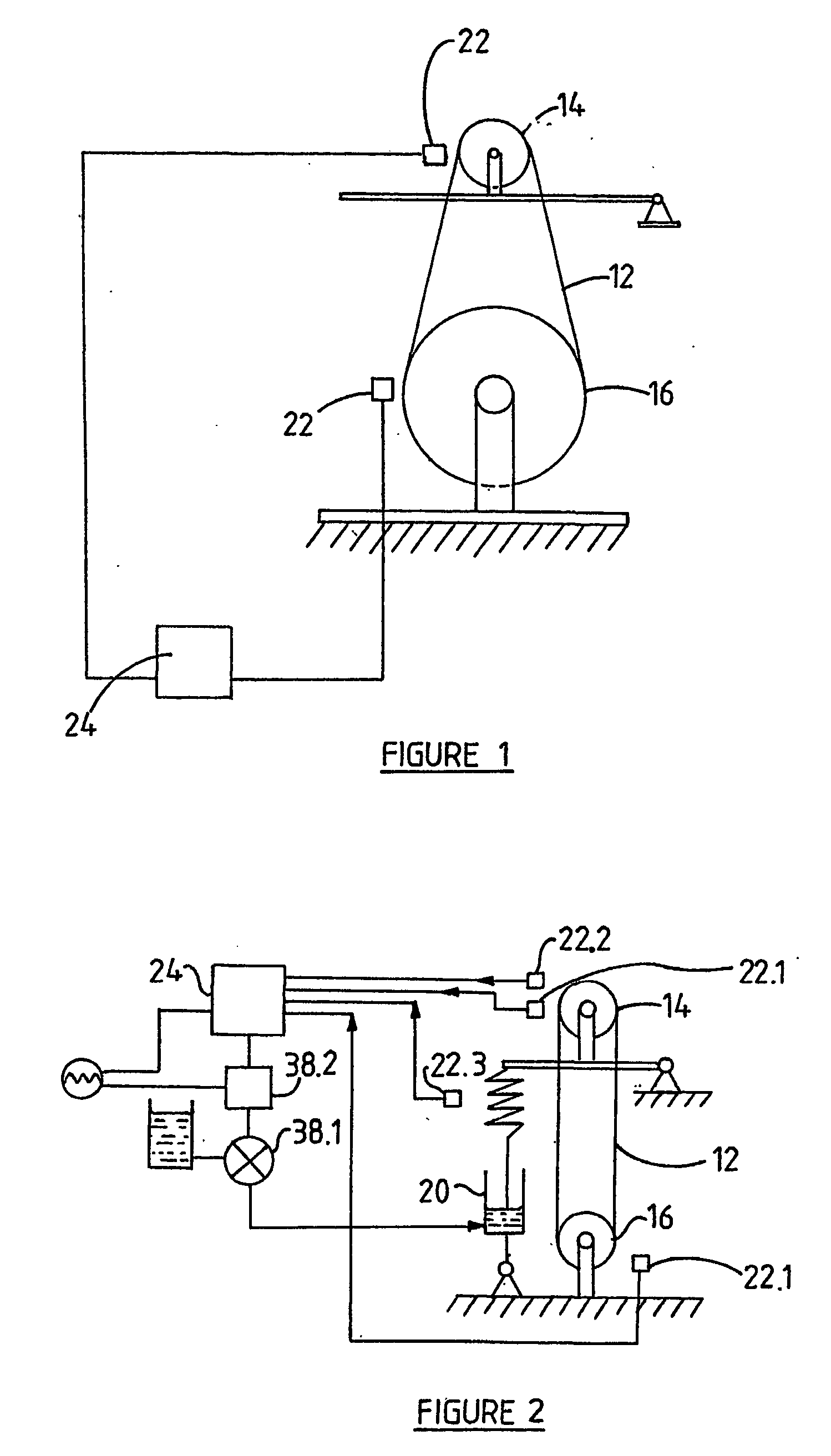Guide system for tensioning a belt and a method of regulating belt tension
a technology of a guide system and a belt tensioning device, which is applied in the direction of belt/chain/gearing, mechanical equipment, belt elements, etc., can solve the problems of slacking of the belt, and non-optimal power transmission between the driver and the driven pulley, so as to reduce the belt tension
- Summary
- Abstract
- Description
- Claims
- Application Information
AI Technical Summary
Benefits of technology
Problems solved by technology
Method used
Image
Examples
Embodiment Construction
[0042] Without limiting the scope thereof, the invention will now be described by way of example only and with reference to the accompanying drawings wherein--
[0043] FIG. 1 is a diagrammatical illustration of a guide system according to one embodiment of the invention;
[0044] FIG. 2 is a diagrammatical illustration of a guide system according to another embodiment of the invention, wherein the guide system includes electronic control means;
[0045] FIG. 3 is an perspective view of the guide system of the Invention;
[0046] FIG. 4 is a perspective view from below of a portion of the guide system of FIG. 3;
[0047] FIG. 5 is a perspective view of a tensioning means and regulating arm of the guide system of FIG. 3; and
[0048] FIGS. 6 to 8 are side views, in the direction of arrow A of FIG. 3 of various operating positions of the guide system, illustrating working of the same.
[0049] A guide system according to the invention is generally designated by reference numeral 10. The guide system 10 co...
PUM
 Login to View More
Login to View More Abstract
Description
Claims
Application Information
 Login to View More
Login to View More - R&D
- Intellectual Property
- Life Sciences
- Materials
- Tech Scout
- Unparalleled Data Quality
- Higher Quality Content
- 60% Fewer Hallucinations
Browse by: Latest US Patents, China's latest patents, Technical Efficacy Thesaurus, Application Domain, Technology Topic, Popular Technical Reports.
© 2025 PatSnap. All rights reserved.Legal|Privacy policy|Modern Slavery Act Transparency Statement|Sitemap|About US| Contact US: help@patsnap.com



